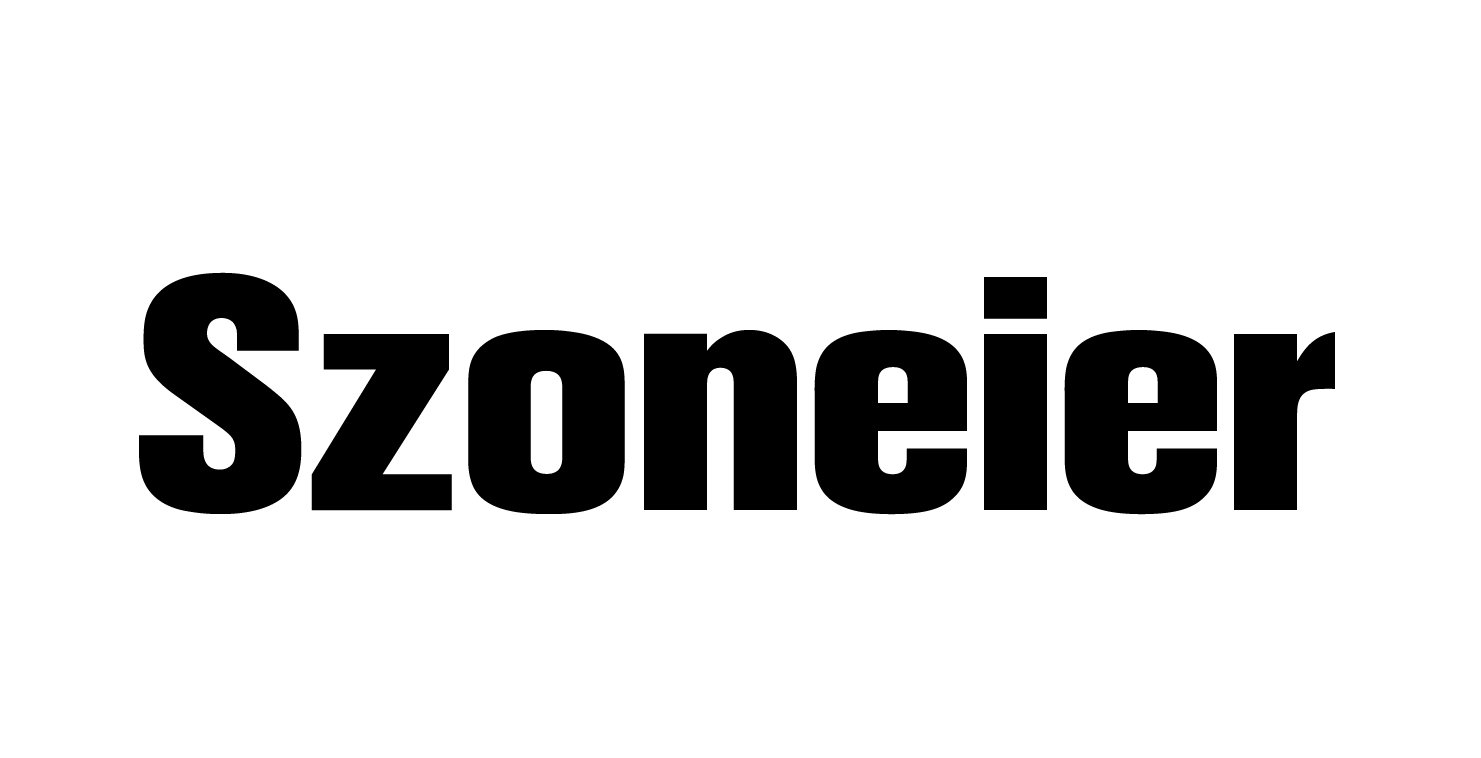Ramie, known as “China grass” or Boehmeria nivea, has quietly shaped the global textile industry for centuries. Despite being one of the strongest natural fibers, it remained under the radar until eco-conscious apparel trends pushed demand for breathable, biodegradable fabrics.
China, India, and Brazil dominate ramie production and exports due to their climatic suitability, large-scale cultivation, and advanced processing technologies. Together, these countries supply over 85% of the world’s ramie for apparel, home textiles, and industrial applications.
To understand why these countries lead the industry—and how buyers can source reliably—we’ll explore production strengths, regulatory environments, supply chains, logistics, and certifications in detail. From ancient weaving traditions in China to Brazil’s modern ramie farms, each story reveals a different side of this sustainable fiber.
What Are the Leading Producers of Ramie Fiber and Which Countries Dominate Global Export Volumes?
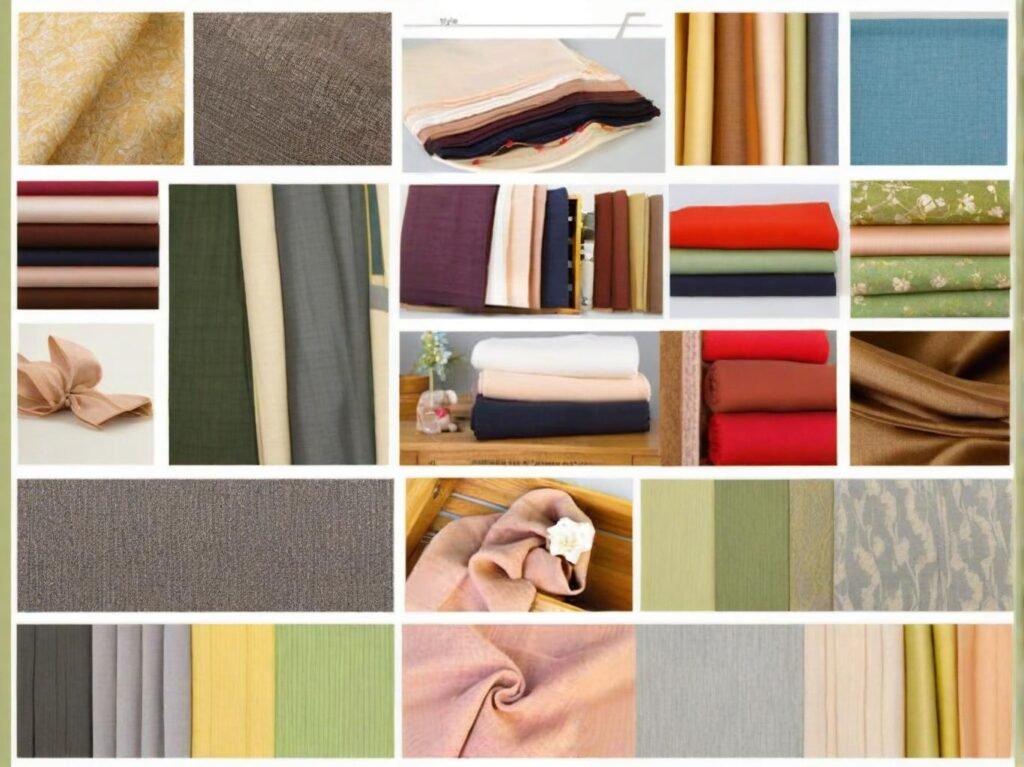
Ramie fiber, a bast fiber renowned for its high tensile strength, natural luster, and wet durability, has historically been concentrated in Asia due to climatic and agronomic suitability. Today, the global supply remains heavily China-centric, but emerging producers are gradually increasing output. Understanding production volumes, regional capabilities, and export flows is critical for textile manufacturers and apparel brands looking to secure consistent ramie supplies for both commercial and luxury applications. China dominates global ramie production, supplying nearly 75% of total output, followed by India at 10–12% and Brazil at 8–10%. Smaller producers such as Thailand and the Philippines focus on niche markets and lack the scale for large-scale apparel manufacturing.
A. Global Production Landscape (2024 Data)
In 2024, global ramie production totaled approximately 150,000 metric tons. China remains the undisputed leader, producing 115,000 tons, with the Hunan Province recognized as the “Ramie Capital of the World.” Advanced mechanized degumming and spinning technologies in Hunan have reduced fiber wastage by roughly 20%, enabling export-quality consistency and compliance with EU and Japanese textile standards.
India, producing around 16,000 tons, serves primarily the EU and Middle Eastern markets. Indian ramie is often hand-extracted, offering premium artisanal fiber, valued for its texture and eco-credentials, though volumes remain limited compared to China.
Brazil contributes 12,500 tons annually, with mechanization initiatives underway to reduce labor intensity by 30% over the next five years. Brazilian exports mainly target North America and the EU, appealing to buyers seeking certified sustainable fibers.
Smaller-scale producers in Thailand (4,500 tons) and the Philippines (3,000 tons) supply regional or specialized markets, including boutique fashion brands and eco-conscious textile manufacturers.
B. Case Study: Hunan Province, China
Hunan alone accounts for ~60% of China’s ramie production. Investment in modern degumming plants and quality-controlled spinning lines has allowed manufacturers to consistently produce fibers that meet ISO and OEKO-TEX standards, reducing production loss and enhancing fiber uniformity.
This vertical integration—from farm cultivation to degummed yarn—gives Hunan-based producers a cost advantage while maintaining high-quality outputs suitable for woven fabrics, shirting, and blended apparel lines. For international buyers, sourcing from Hunan reduces risks of inconsistent fiber length or strength, which is crucial for premium textile manufacturing.
C. Perspectives on Global Market Dominance
- Advantages of China’s Leadership:
- Vertical integration reduces overall production costs.
- Large-scale output ensures consistent supply for bulk orders.
- Advanced processing minimizes fiber defects, improving yarn uniformity for weaving and finishing.
- Risks of Over-Reliance:
- Geopolitical tensions, tariffs, or shipping disruptions can impact global supply.
- High concentration in one region may lead to price volatility during crop or processing issues.
- Emerging Diversification:
- Brazil’s mechanized harvesting and eco-certification initiatives are attracting buyers interested in sustainable sourcing.
- India’s small-scale artisanal fibers, though limited in volume, are increasingly sought for premium and niche apparel markets.
- Thailand and the Philippines cater to boutique and specialized markets, focusing on small-batch, high-quality ramie blends.
D. Market Insights and Buyer Recommendations
- Supply Chain Strategy: For brands requiring large volumes, securing contracts with multiple producers (China + Brazil/India) mitigates risks.
- Quality Prioritization: Buyers should request fiber lab analysis, including tensile strength, fiber fineness, and moisture regain, to ensure consistency.
- Certification Considerations: OEKO-TEX, GRS, and organic certifications are increasingly demanded, particularly in European and North American markets.
- Lead Time Planning: Given Hunan’s export focus, orders placed ahead of peak season ensure timely shipment, avoiding bottlenecks in busy fashion cycles.
China remains the dominant force in ramie fiber production, supplying nearly three-quarters of the global market. However, reliance on a single country presents geopolitical and logistical risks, encouraging brands to consider India and Brazil as secondary sources for risk diversification and sustainability-oriented sourcing. Understanding the regional production capabilities, fiber quality, and export logistics is essential for manufacturers seeking stable, high-quality ramie supplies for apparel, home textiles, and technical fabrics.
How Do Ramie Quality and Processing Standards Differ Across China, India, and Brazil?
Ramie fiber sourcing is increasingly global, with China, India, and Brazil emerging as key suppliers. Each country exhibits distinct advantages and challenges regarding fiber quality, processing standards, and sustainability practices. Understanding these differences is critical for buyers seeking consistent quality, cost efficiency, and compliance with eco-certifications.
- China: Industrialized, high automation, ISO 9001-certified mills; consistent fiber quality and advanced finishing capabilities.
- India: Cost-competitive semi-automated mills; good raw material availability but variable shade consistency.
- Brazil: Focused on sustainable cultivation, with emerging GRS (Global Recycled Standard) adoption; higher freight and logistics costs.
- China sets the benchmark for industrial-scale, high-consistency ramie processing.
- India offers lower raw material and labor costs, albeit with semi-automated operations and some variation in quality.
- Brazil emphasizes eco-friendly production and sustainability certifications, appealing to eco-conscious European and North American buyers.
Comparative Quality Analysis
A. Quality & Certification Matrix
| Parameter | China | India | Brazil |
|---|---|---|---|
| Fiber Fineness (Tex) | 2.5–3.0 | 3.0–3.5 | 2.8–3.2 |
| Average Tenacity (cN/tex) | 45–50 | 38–42 | 40–44 |
| ISO 9001 Coverage (%) | 90% of exporters | 65% of exporters | 70% of exporters |
| GRS / OEKO-TEX Adoption | Rapid growth | Limited | High in pilot programs |
| Processing Automation Level | High | Medium | Medium–High |
Insights:
- Fiber Fineness: China offers finest fiber for premium apparel, while India’s slightly coarser fibers are suited for blended fabrics or workwear. Brazil provides intermediate fineness with eco-friendly production methods.
- Tenacity (Strength): Chinese ramie leads in mechanical strength, supporting heavy-duty textiles and durable shirting. India and Brazil offer moderate tenacity adequate for light-to-medium duty fabrics.
- Certification Coverage: ISO 9001 and OEKO-TEX adoption in China ensures consistent quality and compliance, whereas India’s coverage is lower due to semi-automated operations. Brazil’s certifications emphasize sustainability, aligning with European eco-label standards.
B. Case Study: Brazil’s Sustainable Ramie Farms
In Goiás, Brazil, several farms adopted eco-conscious cultivation practices between 2020–2024:
- Drip Irrigation: Reduced water consumption by 25%, improving efficiency and cost-effectiveness.
- Organic Pest Control: Cut chemical runoff by 40%, improving soil health and environmental compliance.
- Impact on Sourcing: European apparel brands increasingly source from these farms to meet GRS certification requirements and sustainability marketing claims.
- Performance: Brazilian ramie retained fiber tenacity of 42–44 cN/tex comparable to Indian and Chinese counterparts, while providing eco-certification premiums.
Key Takeaway: Sustainability adds brand value but requires consideration of longer lead times and shipping costs.
C. Perspectives on Quality and Standards
- China:
- Strengths: Industrial-scale production, high automation, consistent fiber fineness, broad ISO 9001 adoption.
- Challenges: Rising labor and operational costs may reduce cost advantages, particularly for mid-sized buyers.
- India:
- Strengths: Lower labor and raw material costs; ample supply for semi-automated mills.
- Challenges: Shade variation and colorfastness inconsistencies due to manual or semi-automated dyeing; lower ISO 9001 coverage requires rigorous QC checks.
- Brazil:
- Strengths: Sustainability-focused farming practices, strong GRS adoption, appeal to eco-conscious brands.
- Challenges: Higher freight costs and longer lead times for shipments to Asia or North America; fiber fineness slightly less consistent than China.
D. Procurement and Sourcing Strategies
- Cost-Conscious Buyers:
- India is suitable for large-volume, medium-grade fabrics where slight shade variation is acceptable.
- Consider small-batch sampling to validate consistency.
- Quality-Driven Buyers:
- China provides premium-grade ramie with high ISO 9001 compliance, reducing QC issues and risk of fabric defects.
- Ideal for high-end shirting, luxury blends, and uniform fabrics requiring tight tolerances.
- Sustainability-Focused Buyers:
- Brazil aligns with eco-conscious sourcing mandates, particularly for European or North American markets with GRS or OEKO-TEX requirements.
- Accept trade-offs in freight cost and lead time in exchange for brand sustainability value.
E. Key Insights for Buyers
- Balance Cost, Quality, and Sustainability:
- China: Quality + automation, higher labor cost
- India: Lower cost, variable consistency
- Brazil: Sustainability + certifications, higher shipping cost
- Verify Certifications:
- Demand ISO 9001, OEKO-TEX, and GRS documentation.
- Audit mills or request third-party QC reports to ensure compliance.
- Sample Testing:
- Small-batch trials are essential to confirm fiber fineness, tenacity, and color consistency before bulk procurement.
- Logistics Planning:
- Factor in lead time differences: Brazil’s eco-certified farms often require longer transit, China has shorter shipping windows, and India is intermediate.
Sourcing ramie across China, India, and Brazil requires careful evaluation of quality metrics, certifications, and processing standards:
- China: Best for industrial-scale, high-consistency, ISO-compliant fabrics.
- India: Cost-efficient option for medium-grade fabrics with semi-automated processing.
- Brazil: Leads in sustainable production and eco-certification, attractive for premium or eco-conscious markets.
Recommendation: Buyers must weigh cost, fiber quality, lead times, and sustainability compliance to choose the optimal sourcing region for their product category and market requirements.
Which Environmental and Labor Regulations in Top Ramie-Producing Countries Affect Export Reliability?
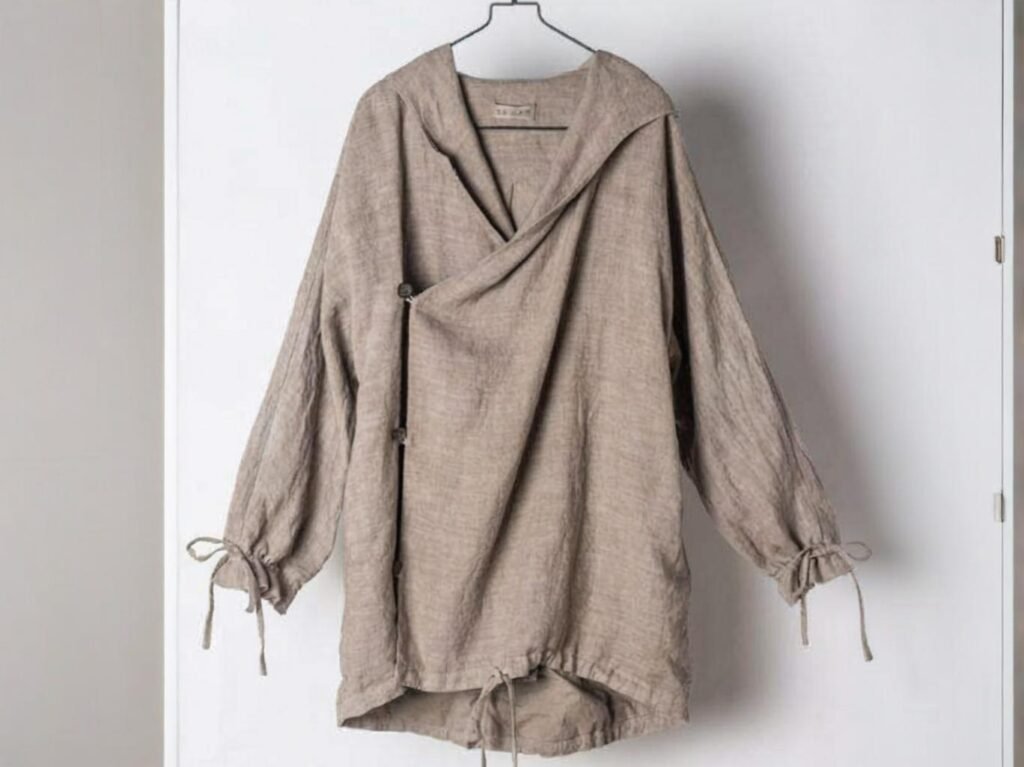
The reliability of ramie fabric exports is heavily influenced by environmental and labor regulations in key producing countries, notably China, India, and Brazil. These laws govern everything from water treatment in textile mills to worker safety standards, shaping production timelines, certification readiness, and ultimately buyer confidence in international markets. For procurement managers, understanding these regulatory landscapes is critical to anticipate risks, avoid shipment delays, and ensure compliance with destination country standards, especially in markets like the European Union and North America, which enforce stringent environmental and social compliance requirements.
Environmental and Labor Compliance in Leading Ramie Producers
China: Chinese ramie mills, particularly in Hunan, Zhejiang, and Jiangxi provinces, face strict environmental regulations. The Water Pollution Control Law and adoption of EU REACH standards require mills to implement advanced wastewater treatment and chemical management systems. These measures enhance sustainability but have increased operational costs by an estimated 12–15% since 2022. Labor compliance includes adherence to minimum wage laws, workplace safety protocols, and social insurance contributions, which ensures high workforce consistency but contributes to rising production costs. Chinese mills often invest in zero-liquid discharge dyeing units to maintain EU market access.
India: India’s ramie production centers, including Karnataka, Assam, and West Bengal, have been affected by the Labor Code 2020 reforms, which improved wages and formalized working hours across spinning mills. While these reforms enhance worker welfare and reduce compliance risks for buyers, environmental compliance remains variable. Wastewater management in smaller artisanal mills is inconsistent, occasionally leading to delays in EU-bound shipments that require stringent chemical safety and effluent reporting.
Brazil: Brazilian producers, particularly in Minas Gerais and São Paulo, operate under the National Environmental Licensing System (SISNAMA) and CLT labor laws, which include union oversight and strict occupational health requirements. Environmental permitting is rigorous, often delaying export readiness by 2–3 weeks, but the regulatory framework enables producers to promote premium sustainability branding to European and North American buyers. Labor practices in Brazil align with international expectations, supporting ethical sourcing claims.
Case Study: EU Buyers and China’s Eco-Compliance Push
In 2023, several ramie exporters in Hunan province upgraded their facilities with zero-liquid discharge dyeing systems to comply with EU REACH and OEKO-TEX standards. As a result:
- Delivery delays decreased by 18% due to fewer shipment rejections.
- Exporters avoided approximately $1.2 million in lost sales from prior chemical compliance issues.
- The initiative enhanced buyer confidence, leading to repeat orders from three major European textile brands.
This example highlights how investments in regulatory compliance directly translate to improved export reliability and market access.
Perspectives
- China: Leading in eco-innovation, but rising costs post-environmental reforms may pressure margin-sensitive buyers. Exporters need to balance compliance investments with competitive pricing.
- India: Labor reforms have increased wages by approximately 15%, improving social compliance; however, inconsistent wastewater treatment in artisanal mills poses a potential risk for EU chemical regulations.
- Brazil: Strong environmental and labor regulations enhance sustainability credentials, appealing to premium buyers, yet bureaucratic licensing processes can extend lead times by 2–3 weeks, requiring careful planning in procurement contracts.
Recommendations for Buyers
To minimize compliance-related export risks, buyers should:
- Integrate Third-Party Audit Reports: Include ISO, OEKO-TEX, and GRS audits in procurement contracts to verify environmental and labor compliance before shipment.
- Establish Supplier Monitoring: Use digital compliance dashboards or blockchain traceability systems to track permit validity, chemical usage, and labor conditions in real time.
- Plan for Lead-Time Buffers: Regulatory inspections and environmental permitting can introduce 2–3 weeks of potential delays, especially in Brazil and India; planning accordingly avoids project disruptions.
- Prioritize Compliance-Ready Mills: Suppliers that already implement REACH-compliant wastewater treatment and labor management systems reduce the likelihood of shipment rejections and improve supply chain reliability.
Environmental and labor regulations in China, India, and Brazil directly impact ramie export reliability. While strict compliance may increase operational costs, it enhances market access, buyer confidence, and long-term sustainability. Strategic procurement practices—such as auditing suppliers, verifying certifications, and planning for regulatory lead times—allow buyers to mitigate compliance risks and ensure timely, quality-assured deliveries to international markets. Understanding these regulatory landscapes is therefore a critical component of successful ramie sourcing strategies.
How Is the Supply Chain Structured for Ramie Material—from Cultivation to Finished Fabric—in Major Exporting Nations?
Ramie, one of the strongest natural bast fibers, has a supply chain that looks deceptively simple on paper—cultivation, extraction, degumming, spinning, weaving, finishing, and export. In reality, its journey differs significantly depending on whether the fibers come from China’s integrated hubs, India’s smallholder networks, or Brazil’s mechanized cooperatives. Each structure influences lead times, cost efficiency, and market readiness for global buyers.
The ramie supply chain typically involves cultivation, fiber extraction, degumming, spinning, weaving, dyeing, and export. China dominates with vertically integrated hubs, India relies on fragmented regional cooperatives, and Brazil operates through mid-sized mechanized farms feeding centralized mills.
The Core Supply Chain Flow
Across major producers, ramie passes through the following stages: cultivation, decortication (fiber extraction), degumming, spinning, weaving/knitting, dyeing, finishing, and final export logistics. Yet, how these stages are managed varies by country.
China (Hunan, Jiangxi, Sichuan): Large-scale contract farming feeds directly into industrial parks. Automated decorticators and enzyme-based degumming ensure consistent fiber quality. Spinning, weaving, and dyeing often occur within the same ISO-certified complexes, reducing both time and costs. Finished fabrics are shipped via high-capacity export ports such as Shanghai, Shenzhen, and Guangzhou.
India (Assam, Bihar): Cultivation is dominated by smallholder farmers, often with plots under two hectares. Manual or semi-mechanized decortication is common, followed by decentralized spinning and weaving mills. Dyeing and finishing units are semi-automated, which creates risks of shade variation and inconsistent finishing quality. Exports move mainly through Mumbai and Kolkata, where port congestion adds further delays.
Brazil (Goiás, Paraná): Mid-sized farms use mechanized harvesting and decortication, often linked to cooperative-run spinning and degumming mills. Brazil’s strength lies in eco-certified dye houses that meet EU buyer requirements, though seasonal rains can disrupt harvesting by up to two weeks per year. Exports are shipped primarily via Santos and Paranaguá ports.
Case Study: China’s Vertical Integration Advantage
In 2022, a Hunan-based textile conglomerate invested nearly USD 50 million into building on-site degumming, spinning, and weaving facilities adjacent to contracted farms. This reduced lead times from 60 days to 35 days—a 40% improvement. As a result, the group secured contracts with two European luxury apparel brands that required consistent, OEKO-TEX-certified fabrics for their spring-summer collections. This case underscores how vertical integration directly influences competitiveness in time-sensitive markets.
Comparative Performance: Supply Chain Structures
- Vertical vs. Fragmented Systems: China’s one-stop supply parks can reduce total costs by 20–25%, while India’s fragmented system often struggles with logistical inefficiencies and inconsistent fiber quality.
- Climate Risks: Brazil’s rainy season between January and March delays harvesting and fiber extraction, causing up to 15-day disruptions annually.
- Logistics Bottlenecks: In 2023, India’s port congestion in Mumbai delayed textile shipments by 7–10 days, impacting smaller apparel buyers with tight seasonal deadlines.
- Certification Access: Brazilian mills, often backed by government sustainability initiatives, are quicker to adopt GOTS, OEKO-TEX, and GRS certifications, appealing to eco-conscious European buyers.
Perspectives on Supply Chain Resilience
- Cost vs. Reliability Trade-Offs – While China offers cost and speed advantages, over-reliance on one country creates geopolitical and trade risk for brands. India remains cost-competitive but risks quality variation, while Brazil offers certification reliability but at higher costs.
- Environmental Considerations – Eco-friendly degumming (enzymatic rather than alkaline) is standard in leading Chinese and Brazilian mills, but still patchy in India due to infrastructure gaps.
- Buyer Implications – Mid-sized apparel brands often choose Brazilian eco-certified suppliers despite higher prices to access EU Green Deal-driven markets. Mass-market buyers still prefer China for volume and speed, while India remains a secondary sourcing hub for brands seeking to diversify supply chains.
The ramie supply chain is structured differently across exporting nations, and these differences matter for buyers balancing cost, speed, sustainability, and compliance. China’s vertical integration delivers efficiency and global scale, India’s fragmented cooperatives offer low-cost options but risk delays, and Brazil’s mechanized yet eco-focused supply chain positions it strongly for premium eco-conscious markets. For global buyers, supply chain resilience and certification readiness are now as critical as tensile strength and price per kilogram.
What Are Freight, Trade Tariff, and Logistics Considerations When Importing Ramie from Southeast Asia versus South America?
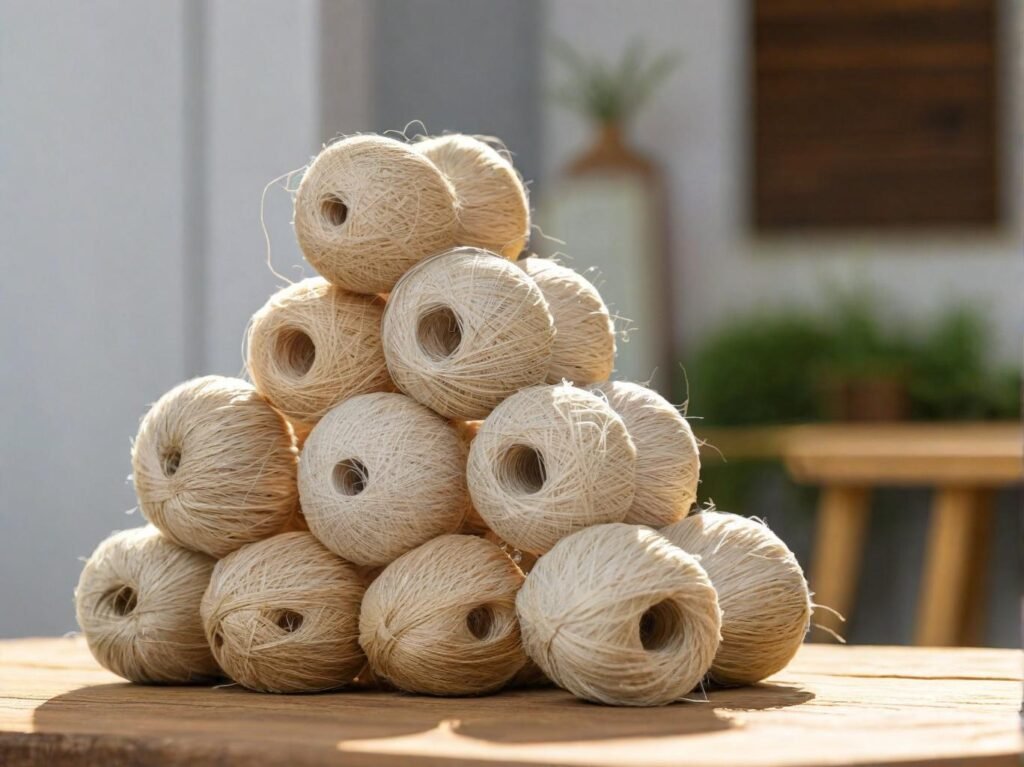
Sourcing ramie fibers internationally involves more than evaluating fiber quality and price—logistics, freight costs, port efficiency, and trade tariffs can significantly impact the total landed cost (TLC) and delivery reliability. Buyers must carefully weigh the advantages of sourcing from Southeast Asia (China, India) against South America (Brazil), particularly for EU and US markets. Importing ramie from Southeast Asia generally provides shorter lead times and lower freight costs, while South American suppliers may offer cost advantages for certain US routes. To optimize landed cost, buyers should consider ocean freight rates, port efficiency, customs duties, and potential trade agreement impacts.
A. Freight Cost and Transit Time Considerations
Freight costs vary by container type, route, and season. In 2024, standard 40ft container ocean freight estimates were as follows:
- China → EU: 28–32 days, USD 2,300–2,800 per container
- India → EU: 24–28 days, USD 2,000–2,600 per container
- Brazil → EU: 32–38 days, USD 3,200–3,800 per container
- Brazil → US: 16–20 days, USD 2,000–2,400 per container
Transit times are influenced by port congestion, shipping line schedules, and customs clearance efficiency. For example, Shanghai and Mumbai handle millions of TEUs annually, offering predictable turnaround and lower congestion risk compared to Santos, Brazil.
B. Trade Tariffs and Import Duties
Tariff structures differ depending on fiber classification, final product, and trade agreements:
- EU Market: Ramie imports from both China and India carry 5–6% duties, whereas Brazilian fibers are subject to similar rates unless preferential tariffs apply via Mercosur–EU agreements.
- US Market: Duties are generally 2–4%, but anti-dumping measures and ongoing trade policy updates can impact cost unpredictably.
Importantly, buyers must account for non-tariff barriers, such as documentation requirements, inspection procedures, and environmental compliance certificates, which can influence lead time and additional handling fees.
C. Case Study: German Apparel Group (2023)
A German fashion company historically sourced Brazilian ramie for its summer shirting line. Post-pandemic freight surcharges and delays of up to three weeks prompted a shift to Indian suppliers. Benefits included:
- 12% reduction in total landed cost due to lower ocean freight and port handling fees
- Shorter lead times from 36 days to 25 days
- More reliable inventory planning, reducing stockouts for seasonal collections
This case illustrates the importance of dynamic freight modeling and supplier flexibility in global sourcing strategies.
D. Perspectives
- Lead Time vs. Cost Trade-Off: While South American routes to the US can be cost-effective, transit to Asia-Pacific buyers is slower and less predictable, affecting seasonal product launches.
- Port Efficiency and Infrastructure: Asian ports handle 2–3× more TEUs than South American counterparts, lowering congestion risks and improving container turnaround.
- Tariff Uncertainty: Trade negotiations, such as the ongoing EU–Mercosur agreement, may reduce tariffs on Brazilian ramie by 2026, potentially shifting sourcing economics.
- Sustainability Considerations: Longer shipping routes increase carbon footprint, which may conflict with corporate ESG targets; sourcing closer to end markets reduces environmental impact.
E. Strategic Sourcing Recommendations
- Model Total Landed Cost (TLC): Include freight, tariffs, insurance, handling, and duty charges when comparing suppliers.
- Diversify Supply: Consider dual sourcing from Asia and South America to hedge against geopolitical or climatic disruptions.
- Plan Lead Times: Align production schedules with seasonal fiber availability and shipping windows, particularly for high-volume orders.
- Verify Documentation: Ensure suppliers provide certificate of origin, phytosanitary certificates, and fiber compliance reports, preventing delays at customs.
Sourcing ramie requires balancing freight cost, transit time, and tariff exposure with fiber quality and sustainability goals. Southeast Asian suppliers offer shorter, more predictable transit times and competitive freight, while South American producers may offer cost advantages for specific markets. Buyers who analyze total landed cost scenarios, account for trade agreements, and diversify suppliers are better positioned to maintain consistent supply, optimize budgets, and reduce delivery risks in global textile operations.
Do Production Costs (Land, Labor, Processing) Vary Significantly Between Major Ramie-Exporting Countries, and How Does That Influence Pricing?
The global ramie market is heavily influenced by production costs, which vary across major exporting countries such as China, India, and Brazil. Differences in labor, land, energy, and processing efficiency directly affect FOB prices, supply chain decisions, and sourcing strategies. Understanding these cost dynamics is crucial for buyers balancing price, quality, and sustainability goals.
- China: Rising wages and stricter environmental compliance increase costs, partially offset by vertical integration and mechanized production.
- India: Low labor costs make it highly competitive for mass production, but environmental compliance and quality consistency can vary.
- Brazil: Investments in mechanization and sustainable farming reduce per-unit costs, but logistics and labor premiums keep FOB prices higher than Asian competitors.
Yes. Production costs differ significantly, shaping global pricing:
- China: High-quality, ISO-certified processing, moderate cost advantage, rising labor and compliance expenses.
- India: Cost-efficient spinning and weaving; low labor costs reduce FOB prices, attractive for high-volume orders.
- Brazil: Sustainability-focused farms and mechanization justify premium prices, particularly for eco-conscious European and North American brands.
Cost Structure Comparison
A. Average Cost Components for Ramie Fabrics (2024)
| Cost Factor | China (USD/kg) | India (USD/kg) | Brazil (USD/kg) |
|---|---|---|---|
| Raw Ramie Fiber | 1.20–1.40 | 1.10–1.30 | 1.30–1.50 |
| Labor (Spinning & Weaving) | 0.50–0.70 | 0.30–0.40 | 0.60–0.80 |
| Energy & Utilities | 0.20–0.25 | 0.18–0.22 | 0.22–0.28 |
| Dyeing & Finishing | 0.40–0.55 | 0.35–0.50 | 0.45–0.60 |
| Logistics to Port | 0.10–0.15 | 0.12–0.16 | 0.20–0.25 |
| Total FOB Cost | 2.4–3.0 | 2.1–2.6 | 2.7–3.4 |
Insights:
- Labor: China and Brazil have higher wages, whereas India’s labor costs remain among the lowest globally.
- Energy & Utilities: Costs are relatively stable, but Brazil’s renewable energy adoption (biomass boilers, hydro) can reduce long-term consumption.
- Dyeing & Finishing: Variations reflect environmental compliance, effluent treatment, and labor efficiency.
- Logistics: Brazilian ports have higher freight costs and longer lead times, while Indian and Chinese ports benefit from regional proximity to major buyers.
B. Case Study: Assam Region, India
In Assam, India, local mills optimized fabric processing costs:
- Implemented renewable biomass boilers for dyeing operations.
- Reduced average processing costs by 15% over three years.
- Attracted European eco-textile buyers, highlighting how energy-efficient practices can offset minor environmental compliance limitations.
- Provided a competitive FOB range of USD 2.1–2.3/kg for 55/45 ramie-cotton shirting fabrics, compared to USD 2.5–2.6/kg for higher-cost regions.
- China:
- Advantages: High industrial integration, ISO-certified mills, reliable fiber quality.
- Challenges: Rising wages (up ~10% annually since 2021) and stricter environmental regulations increase production cost, narrowing low-cost advantage.
- Mitigation: Vertical integration of fiber extraction, spinning, and finishing helps maintain competitiveness.
- India:
- Advantages: Lowest labor costs, abundant raw material, competitive for high-volume orders.
- Challenges: Semi-automated mills may cause shade variation, inconsistent tensile strength, and occasional EU compliance issues.
- Mitigation: Buyers often require QC inspection, small-batch sampling, or third-party certification to ensure consistency.
- Brazil:
- Advantages: Sustainable farms, renewable energy, GRS and OEKO-TEX adoption, strong marketing for eco-conscious buyers.
- Challenges: Higher freight costs (~0.05–0.10 USD/kg more than Asia) and labor premiums, leading to FOB pricing 5–15% higher than Indian or Chinese suppliers.
- Market positioning: Appeals to premium, sustainability-driven brands willing to pay a price premium for certified eco-fiber.
D. Implications for Sourcing and Pricing
- Low-Cost Mass Production: India dominates due to cheap labor and semi-automated processing, ideal for volume-focused buyers.
- High-Quality, Consistent Supply: China’s industrialized mills are suitable for premium shirting and uniform fabrics requiring ISO-compliant QC.
- Sustainability-Oriented Sourcing: Brazil targets buyers valuing eco-certifications, offsetting higher costs with brand differentiation and market premium.
Example: A European fashion brand sourcing 5000 kg of ramie-cotton considered:
| Source | FOB Price (USD/kg) | QC Compliance | Lead Time | Decision |
|---|---|---|---|---|
| China | 2.5–2.8 | ISO 9001, OEKO-TEX | 40 days | High consistency, medium price |
| India | 2.1–2.3 | Partial ISO, local QC | 35 days | Low cost, acceptable for secondary line |
| Brazil | 2.9–3.2 | GRS, OEKO-TEX | 50 days | Premium eco-line, sustainable branding |
Result: Brand split orders: China for main collection, India for secondary garments, Brazil for eco-premium line, optimizing cost, quality, and sustainability positioning.
E. Key Takeaways for Buyers
- Cost Structure Drives Pricing: Higher labor, energy, and logistics costs directly increase FOB price.
- Performance vs. Price: Buyers must balance fiber quality, processing standards, and environmental compliance against budget constraints.
- Strategic Sourcing: Combining suppliers from different regions allows cost optimization while maintaining quality and eco-credentials.
- Forecasting and Lead Times: Plan procurement around seasonal labor costs and shipping cycles to avoid delays.
Production costs vary significantly across China, India, and Brazil, affecting FOB pricing, lead time, and sourcing strategy:
- China: Industrialized, ISO-certified mills, medium-to-high cost, consistent quality.
- India: Cost-competitive, semi-automated, suitable for mass-market or volume-oriented buyers.
- Brazil: Sustainability-focused, eco-certified, higher logistics cost, ideal for premium, eco-conscious markets.
Recommendation: Buyers must carefully assess cost structure, quality standards, lead times, and sustainability requirements to select the optimal sourcing country for their product lines, target markets, and brand positioning.
Which Certifications and Quality Assurance Systems Are Most Prevalent in Top Ramie-Exporting Countries?
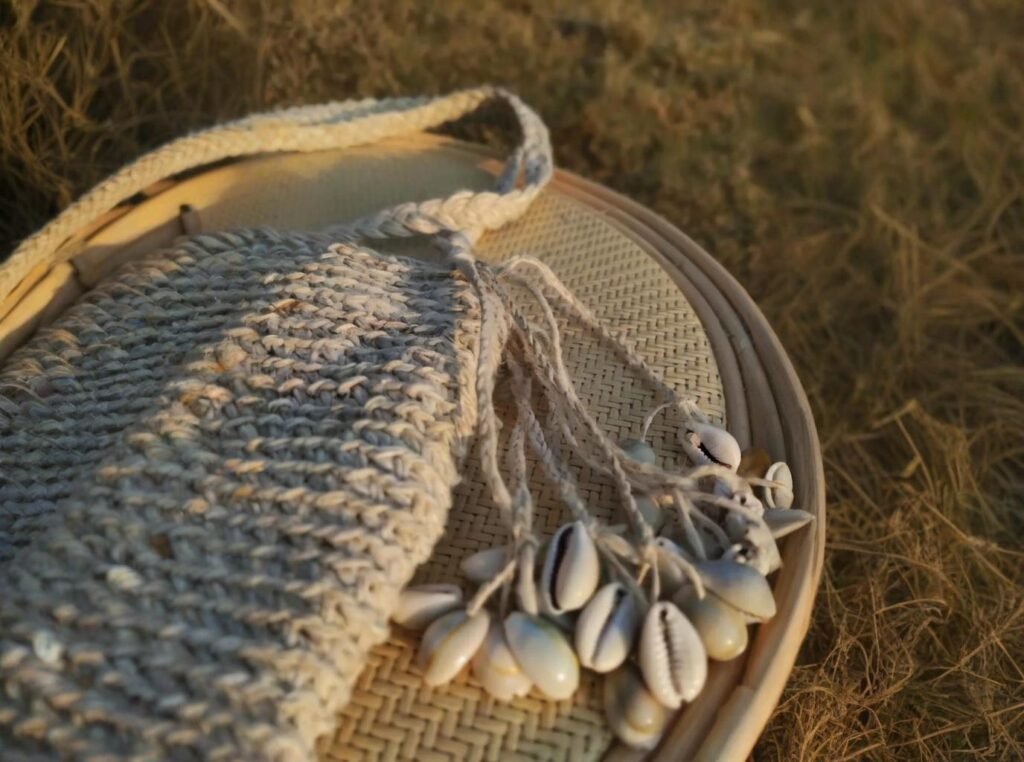
The global ramie textile supply chain has evolved significantly over the past decade, driven by international regulatory standards, consumer demand for sustainable products, and corporate ESG initiatives. In leading producing countries such as China, India, and Brazil, manufacturers increasingly adopt certifications and quality assurance systems to verify product safety, environmental compliance, and process reliability. These certifications not only facilitate market access to the EU and US but also provide buyers with confidence in sourcing ethically and sustainably produced fabrics. Key certifications in top ramie-exporting countries include OEKO-TEX Standard 100, Global Recycled Standard (GRS), ISO 9001, and Better Cotton Initiative (BCI). Together, they verify chemical safety, quality management, and sustainable sourcing, enabling brands to comply with international regulations and support sustainability claims.
Certification and QA Adoption in Leading Ramie-Producing Countries
China: Chinese ramie mills, particularly in Zhejiang, Hunan, and Jiangxi, demonstrate high adoption rates of ISO 9001 (90%) and OEKO-TEX Standard 100 (78%), reflecting both industrial scale and EU compliance readiness. Large production parks catering to global apparel brands increasingly implement GRS certification (46%) for recycled content blends. These certifications ensure process consistency, chemical safety, and traceability, which is critical for brands exporting to Europe under REACH regulations.
India: India’s smaller and medium-scale ramie mills show moderate adoption of certifications. ISO 9001 adoption is around 65%, and OEKO-TEX Standard 100 is at 54%. The Better Cotton Initiative (BCI, 55%) has gained traction among eco-conscious brands integrating cotton–ramie blends. However, smaller mills face cost and administrative barriers, limiting full-scale adoption of GRS and ISO certifications, which can affect consistency for international buyers.
Brazil: Brazilian ramie producers are adopting certifications primarily for premium EU market access. By 2024, 35% of mills held GRS certification, enabling brands to market fabrics with verified eco-claims. ISO 9001 adoption stands at 70%, ensuring process and quality consistency. However, bureaucratic delays in certification and environmental permits can slow implementation, requiring careful planning in procurement timelines.
Case Study: GRS Certification Impact in Brazil
A study of Brazilian ramie mills supplying EU apparel brands revealed that obtaining GRS certification allowed two major French labels to label their summer collections with verified recycled content claims. As a result:
- Sales in the premium eco-luxury segment increased by 18% YoY.
- The certification reduced buyer concerns about traceability and chain-of-custody compliance.
- Mills reported improved operational transparency, making them preferred suppliers for brands requiring multi-standard compliance.
This example underscores how certifications can unlock new market segments and support sustainability marketing initiatives, even if initial implementation requires time and investment.
Perspectives for Buyers
- China: Leads in ISO 9001 and OEKO-TEX adoption, particularly in large industrial clusters. Buyers benefit from high consistency and lower compliance risks but must account for rising operational costs due to stringent environmental laws.
- India: Adoption of BCI and ISO standards supports ethical sourcing and eco-label claims. However, variability in chemical treatment and wastewater management can pose challenges for EU compliance.
- Brazil: GRS and ISO certifications enhance premium positioning but are slowed by bureaucratic processing, necessitating longer lead times for compliance verification.
Strategic Recommendation: Buyers sourcing ramie blends should prioritize suppliers holding multiple certifications, such as ISO 9001, OEKO-TEX, and GRS, to mitigate compliance risks, ensure consistent quality, and maintain alignment with sustainability commitments.
In the global ramie supply chain, certifications and quality assurance systems are no longer optional; they are essential for market access, buyer confidence, and sustainability reporting. Leading producers in China, India, and Brazil offer varying levels of certification adoption, reflecting their scale, export orientation, and investment in eco-compliance. By understanding these frameworks, buyers can strategically select compliant suppliers, reduce shipment and compliance risks, and support brand-level sustainability goals, all while securing consistent, high-quality ramie fabrics for apparel, home textiles, and luxury applications.
How Should Importers Evaluate and Select a Reliable Ramie Material Supplier Abroad?
Sourcing ramie internationally requires more than comparing price lists. The global textile industry is increasingly regulated, and buyers must balance compliance, sustainability, and reliability alongside cost. For importers, choosing the wrong supplier can mean not only delayed shipments but also regulatory rejections, reputational damage, or financial losses. A structured evaluation process is therefore essential to ensure that supply chains are resilient and aligned with market expectations.
Importers should evaluate ramie suppliers based on certifications, production capacity, lead times, quality control documentation, audit transparency, and sustainability practices. Reliable suppliers provide independent lab reports, realistic MOQs, and compliance records before contracts are signed.
Supplier Assessment Framework
A reliable ramie supplier should be evaluated across several performance and compliance dimensions:
Certifications and Standards Certifications such as OEKO-TEX® Standard 100, GRS (Global Recycled Standard), ISO 9001, and GOTS (for organic blends) confirm that the supplier meets textile safety, quality, and sustainability benchmarks. Without these, exporters risk rejection at EU or U.S. ports due to non-compliance with REACH or CPSIA regulations.
Production Capacity and Lead Times Suppliers must demonstrate that they can handle both large-volume orders and time-sensitive projects. Capacity audits should cover machine uptime, annual tonnage, and backup production facilities. For instance, Chinese mills often guarantee annual outputs of 5,000–10,000 tons, while Indian mills operate at smaller scales but offer flexible MOQs.
Quality Control Systems Look for suppliers with internal QA labs and documented compliance with ISO, ASTM, and AATCC test protocols. Key tests include tensile strength, moisture management, wrinkle recovery, and shrinkage resistance. Independent lab test reports should be available before shipment, particularly for ramie blends marketed to premium apparel buyers.
Sustainability Practices A growing number of buyers require suppliers to demonstrate wastewater treatment, energy reduction initiatives, and recycling processes. Mills investing in enzymatic degumming rather than chemical-intensive methods are more attractive to eco-conscious brands. EU buyers increasingly demand traceable CO₂ and water footprint data as part of procurement decisions.
Logistics Reliability Proximity to major export hubs such as Shanghai, Mumbai, or Santos impacts lead times. Importers should review a supplier’s Incoterm options, freight partnerships, and historical on-time delivery rates. Inconsistent logistics add unnecessary risk to fashion retailers operating under strict seasonal calendars.
Ethical Labor Compliance Third-party audits such as Sedex SMETA, BSCI, or WRAP confirm that suppliers maintain safe working conditions and fair labor practices. For government and institutional buyers, these certifications are not optional—they are contractual requirements.
Case Study: German Buyer Using a Supplier Scorecard
In 2023, a German fashion retailer implemented a 100-point supplier evaluation scorecard, assigning weights to cost, certifications, QC systems, sustainability, and logistics. Chinese suppliers with ISO 9001 + OEKO-TEX certifications scored above 85 points, securing long-term contracts for ramie–cotton blends. Conversely, mills lacking wastewater treatment documentation were downgraded despite offering 10–12% lower prices, as the retailer prioritized EU compliance and brand reputation.
Perspectives
- Cost vs. Compliance Trade-Offs: Low-cost suppliers sometimes reduce expenses by neglecting wastewater treatment or chemical safety. This can lead to EU port rejections, increasing hidden costs for buyers.
- Digital Auditing Tools: Blockchain-based platforms such as TextileGenesis now allow brands to trace ramie’s journey from farm to finished fabric, improving trust with eco-conscious consumers.
- MOQ Negotiations: Many mills set minimums of 3,000 meters per order, which can be restrictive for smaller buyers. Consolidating orders through sourcing agents or textile cooperatives can reduce unit costs without compromising quality.
- Regional Differences: Brazil’s ramie suppliers often specialize in eco-certified fabrics with strong appeal in the EU, while India’s fragmented supply base requires more careful auditing but can deliver competitive pricing.
A reliable ramie supplier must demonstrate technical capability, regulatory compliance, and sustainability leadership. Importers should adopt a multi-criteria evaluation system that weighs certifications, production capacity, QC systems, and ethical practices alongside cost. While audits and certifications add 2–5% to procurement costs, they significantly reduce risks of shipment rejection, reputational damage, and long-term supply instability. In today’s regulated and eco-conscious textile market, responsible supplier selection is not just good practice—it is a competitive necessity.
SzoneierFabrics offers customized ramie blend fabrics with:
- Full certification coverage (ISO 9001, OEKO-TEX, GRS)
- Low MOQ and fast lead times for global apparel and home textile buyers
- Free design and sampling support with sustainable sourcing practices
- Comprehensive QC reports ensuring EU and US compliance standards
Contact SzoneierFabrics today to discuss your ramie fabric sourcing needs and request tailored quotations for your projects.
